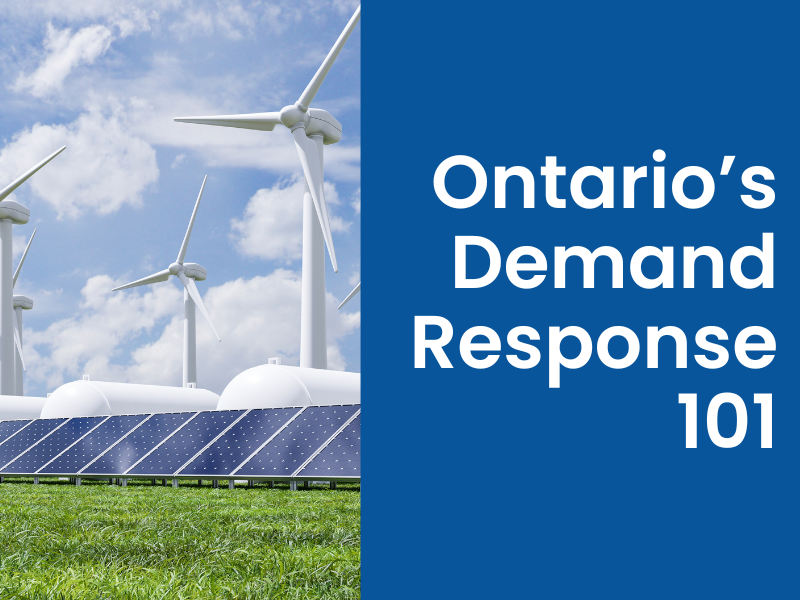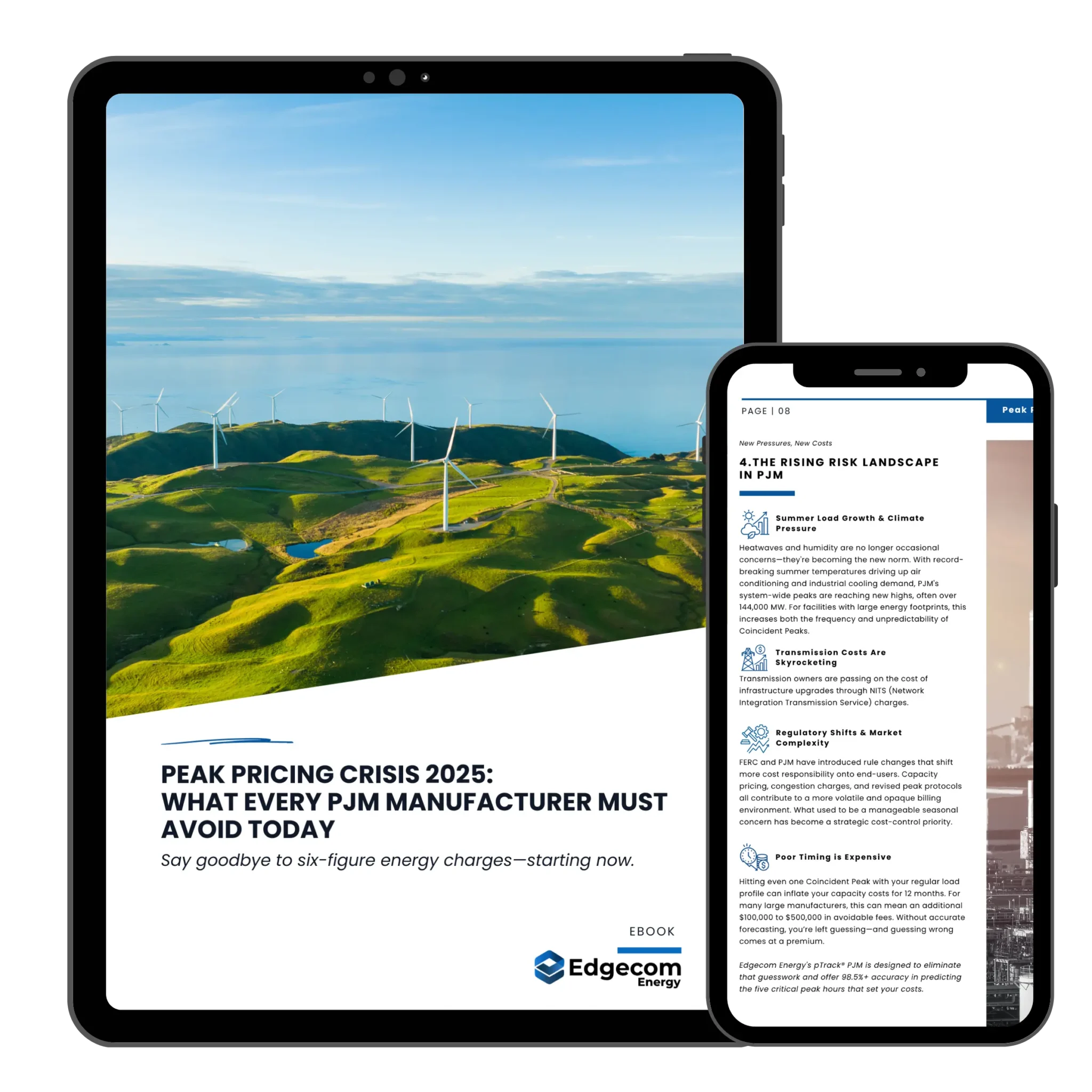What is Demand Response?
Demand response is a strategy used by utility companies and grid operators to manage and reduce electricity consumption during peak demand periods. The goal is to balance supply and demand, enhance grid reliability, and reduce the need for additional power plants. Here’s how it typically works:
- Receive Incentives for Reducing Loads: Customers (residential, commercial, and industrial) are encouraged to reduce or shift their electricity usage during peak times. They might receive financial incentives for participating, such as rebates or lower rates.
- Get Alerts to Know When To Reduce Loads: Utility companies communicate with customers via notifications, requests, or signals to inform them about the need to reduce usage.
- Peak Shaving and Load Shifting: The main methods include peak shaving (reducing load during peak times) and load shifting (moving energy use to off-peak times).
- Emergency and Economic DR: Emergency demand response is activated during grid emergencies to prevent blackouts. Economic demand response is used to reduce energy costs when electricity prices are high.
Overall, demand response helps create a more flexible and efficient energy system, reduce reliance on fossil fuels, lower energy costs, and minimize environmental impact. Ontario has a very dynamic grid that relies on a mix of hydro, nuclear, natural gas, and renewables.
What is a Demand Response Aggregator?
A demand response aggregator is an intermediary that coordinates and manages the participation of multiple electricity consumers (residential, commercial, or industrial) in demand response programs. They pool together the electricity reduction capabilities of these participants to create a significant, flexible resource that can be used by utility companies or grid operators to manage grid stability and reduce peak demand. Here are some examples of what an aggregator does.
- Aggregators identify and recruit electricity consumers who are willing and able to reduce their energy usage during peak periods. If you’ve ever been approached by a company offering Demand Response services directly, they are likely aggregators.
- They coordinate these participants’ collective demand response actions, ensuring that the aggregated load reduction meets the requirements set by the utility or grid operator. Aggregators take on a degree of risk with this, as they are subject to penalties from the IESO if their customers do not curtail as much as was promised.
- Aggregators often provide the technology and systems needed for automated demand response. This can include smart meters, load control devices, and software platforms to monitor and control energy usage. They will send out alerts directly to you when a Demand Response event will occur with plenty of notice by email, phone, and text.
- Aggregators ensure the load reductions are optimized for the participants’ convenience and the grid’s needs. They also ensure compliance with regulatory and program requirements. They will have a lot of advice on how you can successfully reduce your load. They are truly partners with you to ensure you get your payments.
- Aggregators handle the financial aspects, distributing the incentives or payments received from the utility or grid operator to the individual participants based on their contributions to the demand response effort. Your Demand Responses payments will come directly from the aggregator.
By pooling together many small reductions in energy use, demand response aggregators can substantially impact the grid, providing a flexible and reliable resource for managing electricity demand and enhancing grid stability.
What are the benefits of demand response for my organization?
Participating in demand response (DR) programs can offer your organization several significant benefits. It is really a win-win program and can create new revenue streams for your business.
1. Cost Savings
By shifting or reducing electricity usage during peak periods, your organization can lower its energy bills and take advantage of lower rates during off-peak times. Additionally, participating in DR programs often comes with financial incentives or payments from utility companies to reduce energy use during peak demand.
2. Enhanced Grid Reliability
By participating in DR, your organization helps maintain grid stability and prevent blackouts or brownouts, which can be critical for operations.
3. Operational Efficiency
DR programs encourage a more strategic approach to energy management, helping your organization identify and implement more efficient energy practices. Effective DR strategies can help manage and reduce peak load, improving the overall efficiency of your energy consumption.
4. Environmental Impact
By reducing demand during peak periods, your organization contributes to lowering greenhouse gas emissions. Furthermore, participation in DR can be part of your organization’s broader sustainability and corporate social responsibility initiatives.
5. Revenue Generation
One of the main drivers for participating in Demand Response is that organizations can generate additional revenue by participating in DR programs and receiving payment for energy reduction contributions.
How do I Enroll in Demand Response?
Enrolling in Demand Response with Edgecom Energy is simple and free of charge—there’s no out-of-pocket cost. Here’s how it works:
- Edgecom Energy handles all the paperwork for you, including authorizing access to your utility data and bidding on your behalf in the capacity auction.
- Choose your preferred notification method: phone, text, or email.
- If you’re a dataTrack™ or pTrack® customer, you can monitor everything on our online portal.
- Edgecom Energy verifies your curtailment efforts and processes your payments.
- You’ll receive biannual payments directly from Edgecom Energy based on your curtailment.
What Happens During a Demand Response Event?
Notification: The evening before an event, you’ll receive a ‘Standby Notice,’ followed by a ‘Curtailment Notice’ at least two hours before you need to reduce your load. Notifications are sent via SMS, phone call, or email.
Curtailment: You’ll be asked to curtail your load for four hours. If you’re a dataTrack™ or pTrack® customer, you can monitor your curtailment in real time on our portal. Alternatively, Edgecom Energy offers automated demand response and a Network Operation Center service, allowing you to automate the process.
Support: Our support team is available throughout the event, even outside regular business hours.
What Can I Do to Reduce My Load During an Event?
Our team will help identify and quantify curtailment opportunities. Some examples include:
- Dimming or reducing lighting
- Shifting production to later in the day or the following day
- Pre-cooling your building and letting it gradually return to normal
- Installing a Battery Energy Storage System (BESS)
- Installing natural gas generators or retrofitting diesel generators
How Am I Compensated?
Compensation varies annually based on IESO rates and the amount you curtail. Edgecom Energy submits your curtailment data to the IESO, and you’ll receive biannual payments directly from us.
Is Demand Response Right for My Organization?
Absolutely! Demand response benefits both the grid and your organization. With no upfront cost and the potential to generate new revenue, it’s a win-win opportunity.

